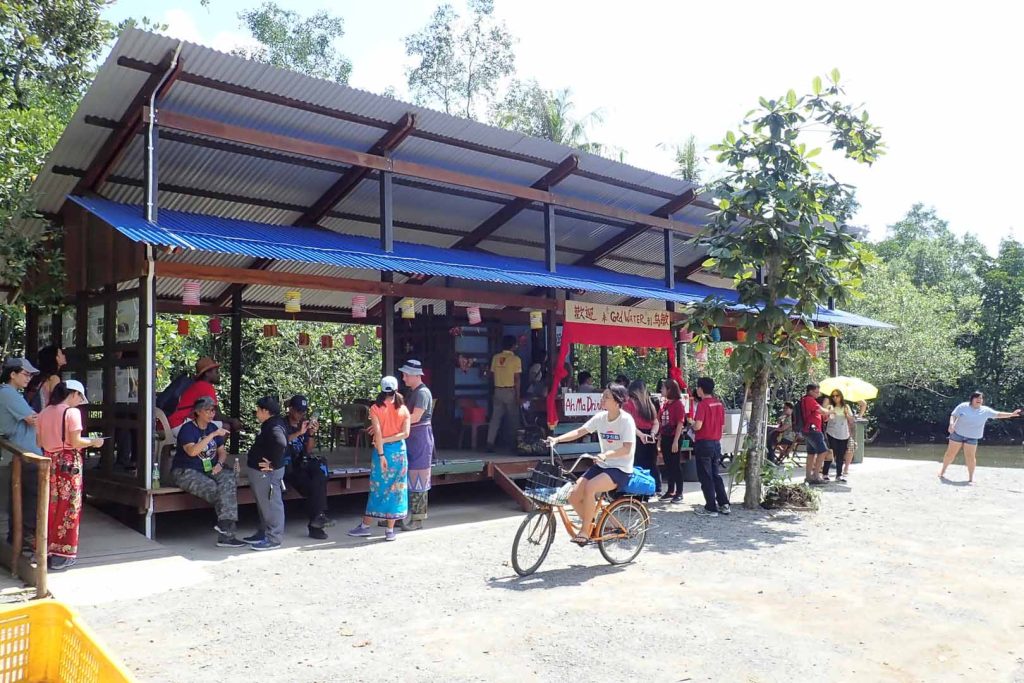The Ah Ma Drink Stall Project is a design/build reconstruction project on Pulau Ubin, an island off mainland Singapore that is one of the last places in urbanized Singapore with kampong (a Malay word meaning “village”) houses and lifestyle. There, 82-year-old Madam Ong (nicknamed Ah Ma, meaning “Grandma”) sells coconuts at her 25-year-old makeshift drink stall. The stall is a familiar landmark on the island and of sentimental value to Ah Ma and visitors to Pulau Ubin. This project by architecture students from the National University of Singapore is a pilot to revitalize kampong life and a test bed for future restoration of kampong houses. It is significant as the first ground-up public structure in Singapore designed and built by volunteers in collaboration with multiple stakeholders. It also paved the way for subsequent restoration of timber houses on the island.
Cause
The drink stall was a makeshift construction that deteriorated into a structurally unsafe structure due to ground settlement as well as occasional river flooding. The reconstructed stall addresses the flood with a raised deck. It invokes the rustic quality of the old stall and keeps traces of the past by recycling original timber planks and restoring signboards. The structure was designed with prefabricated parts to reduce construction time on site as there is no electricity or water supply. The customer-seating area is larger, airier, more sheltered, and more comfortable.
Method
In a participatory design process, models were used to discuss the different design iterations with Ah Ma, her daughter, and the authorities. A villager experienced in vernacular construction taught students how to construct vernacular interlocking timber joints. Ah Ma’s family, local residents, students, and volunteers participated in the construction. This resulted in a greater sense of ownership of the drink stall and a better design. A placemaking approach was used to get stakeholders to collaborate on creating displays for a heritage wall, which showcase the history of the stall and the nature of the surrounding area.
Impact
The stall has become a social meeting place, a pit stop where visitors can learn about the heritage of the area and intangible cultural practices. It has brought more customers and allows Ah Ma to continue living independently on the island. A minister has visited the site and given assurance that the stall will stay even though it is on state land. The successful outcome gave government agencies the confidence to do future community-engagement projects.

